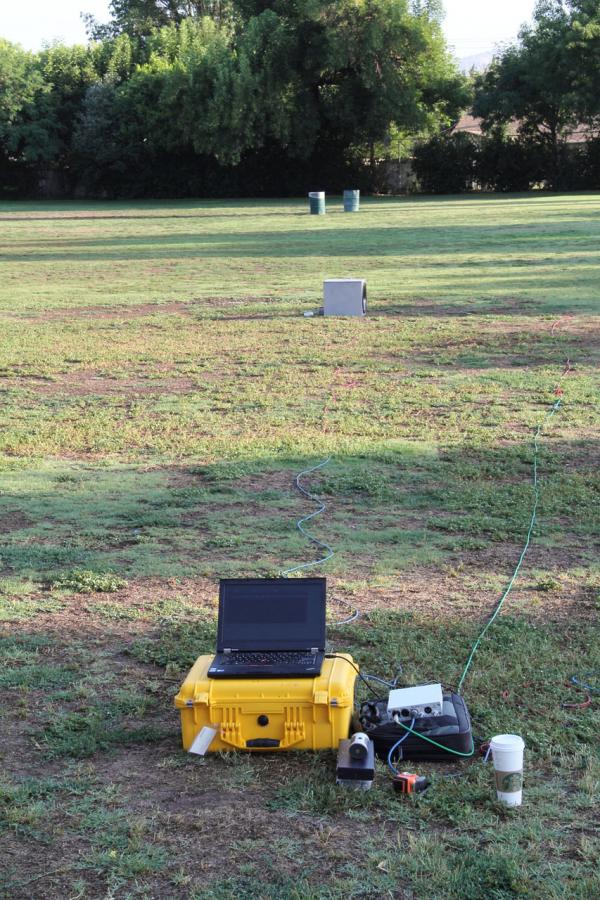CEA-2010: A Good Baseline for Bass?

The way the audio industry has been measuring subwoofers for decades has turned out to be inadequate. But the new method they’ve come up with may be causing as much confusion as the old one.
To understand why there’s so much controversy surrounding the recent introduction of the CEA-2010 subwoofer measurement standard (PDF), it helps to first understand one of the big differences between subwoofers and regular speakers. Most of us are used to judging speakers by their frequency response — i.e., the flatter and more extended, the better. But in a subwoofer, distortion is at least as important as frequency response, and perhaps even more important.
If you’re automotively inclined, you can think of the frequency response vs. distortion issue like horsepower vs. torque. Regular speakers need flat and extended frequency response, but distortion doesn’t usually matter so much for them — just as an Indy 500 race car needs tons of horsepower to hit high speeds but can get by without a lot of torque. Subwoofers, though, benefit from low distortion and high maximum output, and aren’t so affected by drooping frequency response — just as a pickup truck needs lots of torque to tow a boat trailer but doesn’t need a lot of horsepower.
I stumbled upon the frequency response vs. distortion issue when conducting a blind panel test of subwoofers back in 1998 or so. In my panel test, the B&W sub the panelists picked as their favorite — i.e., the deepest and most powerful-sounding sub — had a measured frequency response that started to fall below 35 Hz. But a sub from Von Schweikert Audio with a measured frequency response down to 19 Hz had panelists complaining about a lack of power and deep bass.
Eager to figure out what was up, I ran more tests, including phase response, amplifier power, etc. When I ran a seat-of-the-pants distortion test, measuring the sound-pressure level of each subwoofer at 10% distortion at 20 Hz, I suddenly had my answer. The B&W sub, as well as the other two subs the panelists liked best, put out much more SPL at 20 Hz without exceeding that 10% distortion threshold.
Other people in the audio biz realized the same thing. This realization was the impetus behind the development of CEA-2010. CEA-2010 sets certain maximum distortion thresholds, and measures the SPL a subwoofer can reach at six different bass frequencies without exceeding those thresholds.
(If you need a quick and accessible primer on distortion, read “Distortion: A Show and Tell," which explains and demonstrates much of what I’ll discuss below.)
When I found out about CEA-2010, I was eager to adopt it. S+V has done subwoofer output measurements for years, but not in a way that anyone else could easily duplicate. So far, though, CEA-2010 may have fostered more controversy than clarity.
How CEA-2010 works
CEA-2010 was based largely on the research of Don Keele, a veteran audio engineer perhaps best known for the lengthy, authoritative speaker reviews he wrote for S+V’s now-defunct sister publication, Audio. The basic concept employs a real-time audio spectrum analyzer, which shows the level of each frequency of sound. To test a subwoofer at a certain bass frequency, you play a special test tone (available here in MP3 format), then turn up the volume and watch the effects on the spectrum analyzer. As you can see in “Distortion: A Show and Tell,” the distortion harmonics appear on the analyzer’s screen as added tones at multiples of the original test tone — i.e., a 50 Hz test tone will produce distortion harmonics at 100 Hz, 150 Hz, 200 Hz, etc.
When the distortion harmonics exceed a certain threshold, you note the level in decibels of the fundamental tone on the analyzer. CEA-2010 records the results at six frequencies spaced one-third octave apart: 20, 25, 31.5, 40, 50 and 63 Hz. The results at 20 to 31.5 Hz are averaged as the “Ultra-Low Bass” output, and the results at 40 to 63 Hz are averaged as the “Low Bass” output.
The idea is that you get two basic numbers — Ultra-Low Bass and Low Bass — by which you can then judge a subwoofer.
Before I published any CEA-2010 measurements in S+V, I experimented with the technique for a few months in the effort to get consistent results. When I started, to my knowledge only a couple of manufacturers and no publications were using the technique, so I had few results I could compare mine to.
While the procedure can be performed with a spectrum analyzer — that’s the way I originally did it — Keele has written a CEA-2010 routine that runs on the Igor Pro measurement and analysis software platform. The software essentially works the same way as a spectrum analyzer, but automates the process so it’s more consistent, more accurate and much easier.
- Log in or register to post comments



































































